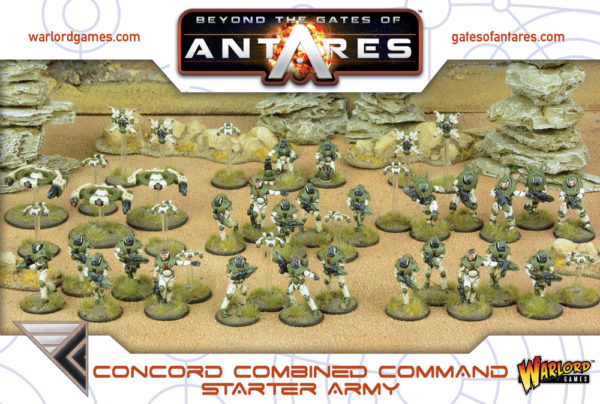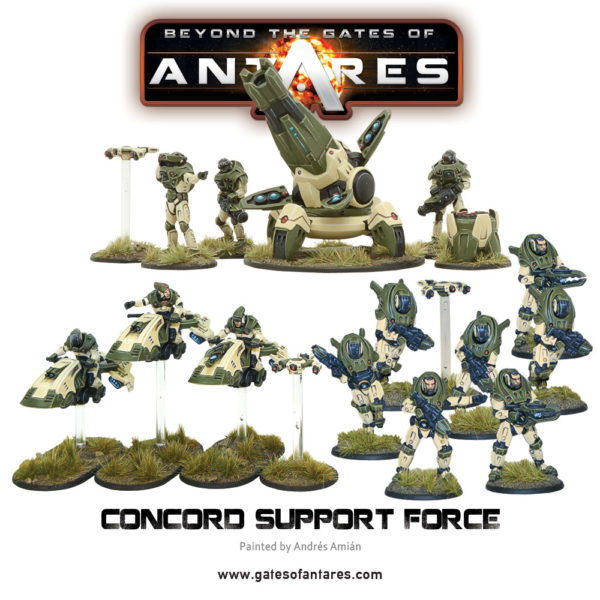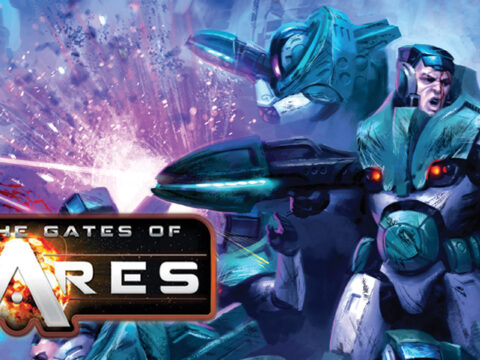With the vast scale of the Beyond the Gates of Antares universe, there is scope for countless races, near-infinite worlds to explore, and of course – this somewhat inevitably leads to conflict…
We’ve been asked by a number of community members as to whether there are ‘blue on blue’ battles – battles between rival armies of the same faction – Concord vs Concord, for example…
We put the question to the game’s creator, the venerable Rick Priestley…
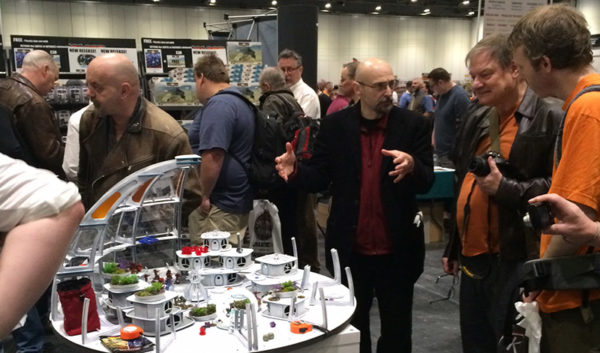
Rick: That Hobday chap was only saying to me the other day how it would be really great if Antares players could pitch Concord against Concord, seeing as how most folks have at least some Concord forces from the starter set. ‘But they can!’ I respond with alacrity and possibly celerity, but definitely not celery, contrary to what many people say down at the old Dog and Duck. ‘There’s nothing stopping folks fighting any side against any side really,’ say I without a trace of salad vegetable in sight, ‘especially Concord.’
‘Especially?’ says young Hobday, whose keen analytical mind misses nothing. His infamous razor-sharp acuity slices and dices like a human Veg-o-matic.
‘Yes…’ I reply, having regained my breath, ‘for is it not written in the Antares rulebook how the Mandarins of Aan did undertake naughtiness in the Seventh Segment, and were eventually driven out from the PanHuman Corgette…’
‘Corgette?
‘Concord, I said Concord… and many ended up taking refuge with the Freeborn.’
‘Hmm,’ says he of the penetrating glare, ‘You might need to fill that out a bit for people… preferably without any silly references to vegetables.’
‘What none at all!’ I gasp.
‘None,’ he replies sternly.
‘Fine!’ I concede; for I am nothing if not the most reasonable of men. ‘Lettuce begin.’
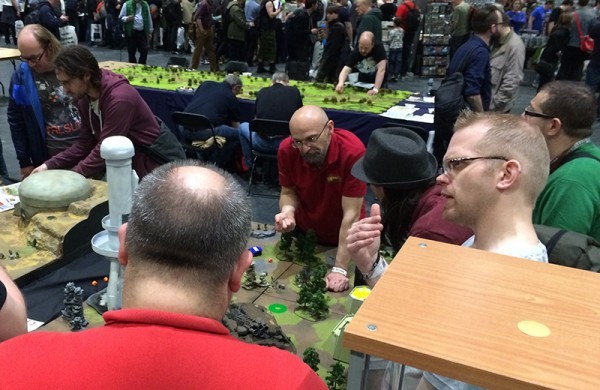
Shards Within Shards
In the Antarean universe, advanced Integrated Machine Intelligence – IMTel – forms a cohesive bond that draws together the human societies of both the Panhuman Concord and the Isorian Shard. If you look at the global projection of Antares on page 208-9 of the rulebook, you’ll see that the rival factions are envisaged as occupying territories, much as the nations of our own world occupy physical space upon its surface. This map is a helpful way of thinking about the rival civilisations. It creates visual reference points by which we can navigate our way around Antarean space, from the warzones of the Western and Eastern Interfaces, to the melting-pot of the Determinate. Presenting the different factions in this way encourages us to think of them as individual nation states, much like Germany and France on the eve of the First World War, or the United States of America and the Soviet Union during the Cold War. For many players, perhaps less interested in the intricacies of the background than in the game itself, this is sufficient to get a grip on the essential rivalries and relationships between the different armies. At its most basic, the back-story reveals the PanHuman Concord to be implacable opponents of the Isorian Shard, and vice versa: two irreconcilable empires doomed to wage a war neither can win so long as the Seventh Age endures.
That map of Antarean space gives a reassuring sense of who lives where, as is the intention of course. However, I’d like to think that anyone reading the descriptions of both the Concord and the Isorians, would realise that a more complex picture soon emerges. These cultures are certainly not countries in the sense with which we are familiar. The territories they occupy do not have borders; even the regions demarked as belonging to the Concord or Isorians encompass worlds that lie outside of either. Institutions and organisations that appear on one level to be centralised and highly directed, are, on another level, extremely fragmented and driven by local need. The way that the IMTel functions means that every world is a separate shard – a society unto itself. The IMTel of an individual shard can only be updated with the whole by contact with spacecraft, which can in turn only carry a version of the IMTel that is an amalgamation of the places each ship has been and the contacts it has made. It is a kind of machine evolution. The equivalent of IMTel ‘genes’ are spread throughout the Nexus at different rates depending upon the degree of contact between different parts of it. The PanHuman Concord, and for that matter the Isorian Senatex, is not a cohesive or centralised state; it is a cultural collective of worlds whose IMTel remains mutually compatible. It is like a gene-pool in a living species, except the species is a machine-intelligence spread across the Antarean Nexus.
Speciation in plants and animals occurs where differing environmental pressures operate on isolated populations, and it is rational to imagine that the IMTel is subject to similar kinds of pressures, albeit on multi-dimensional levels. Where contact between worlds is sporadic, or the rate of mutation of IMTel very rapid, the result will be divergent evolution of different shards. If two populations are far apart in Antarean terms, and both are diverging in differing ways, then a point will be reached when they become mutually incompatible. More likely, they will first grow sufficiently different that they become antagonistic. With further contact between them, one version of the IMTel will prevail over the other. The two will merge, and any incompatibilities between them will be resolved. Within both the PanHuman Concord and Isorian Senatex, these constantly evolving IMTel relationships create endless opportunities for armed conflicts to occur. This is one of the things intentionally ‘seeded’ into the background of the game, an ‘open door’ if you like, that invites us to explore particular and potentially detailed rivalries within the major IMTel shards themselves.
The divergence of the Isorians and PanHuman Concord is the most obvious example of how this works. In this case the two societies are now so different that reconciliation has become impossible. What was once a single IMTel entity has become two incompatible operating systems. If these were living species, we would say their ‘genetic’ make-up no longer allows for cross-fertilisation. They even look different as a result. This gives us our embattled forces, two bitterly opposed factions, each with its own distinctive look and feel, even though both share a common heritage.
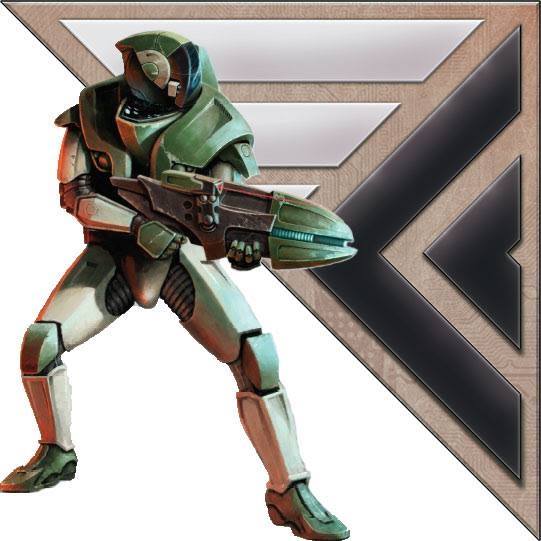
The second instance of warfare resulting from a split in the IMTel is buried in the back-story, but is intended to present us with that ‘open door’ mentioned earlier. It is an example of just what can happen even within what we might think of as the secure boundaries of the PanHuman Concord. This is the story of the Aan Shard and the Mandarins of Aan, which is touched upon in several places in the rulebook. The full tale of the Mandarins of Aan is something best left for another day, though I have a feeling they are going to be playing a significant role in future supplements. Briefly, roughly five hundred years before the present, a divergent shard developed in the Seventh Segment based upon the world of Aan Four. This shard absorbed other localised worlds and continued to diverge, driven – in his case – by a cadre of NuHu who combined inhuman ambition with a cold and savage machine-intelligence. Eventually, the rogue shard’s malign influence triggered security shards within nearby worlds, and forces were assembled to recover the Aan Shard. During the resultant war, Aan Four was all but destroyed, and a seal placed upon its gateway to separate the remnants of the tainted planet from Antarean space (in recent times the Vorl broke this seal, leading to the Seventh Segment war – see the history of Commander Kamrana Josen p228 of the rulebook).
Aan Four gives us an example of a shard that has gone rogue – whose IMTel has mutated or evolved to a state where open warfare breaks out between it and the surrounding worlds of the Concord. In the case of Aan Four the divergence was driven by human intervention in the form of NuHu elites. It is possible to imagine shards evolving to independence by other means. Examples that spring to mind include, long isolation due to disturbances within the Antarean photosphere, encounters with alien civilisations bringing new technologies or introducing new species, localised discoveries of new technologies, discoveries of ancient but functioning technologies, aberrant mutations or corruption in the local IMTel that might result from pure mechanical error or damage to a planet’s nanosphere, long periods of peace and stability resulting in security shards atrophying and becoming useless, and active manipulation of the shard’s IMTel by third parties with ambitions of their own. No doubt more circumstances can be added to this list, but it will suffice to suggest just some of the reasons why shards might develop in divergent and even in antagonistic ways. Ultimately, the whole shard is so vast, and the resources of the Concord so great, that divergence is likely to be brought back into line fairly quickly. However, as with the Isorian/Concord split and the Aan Shard rebellion, there is always the possibility of shards becoming irreconcilably antagonistic. Hostility within the Concord itself is therefore something that is endemic on a low-level, as divergent shards are brought back into the fold, and corrupted strands of IMTel eradicated from the nanophere of liberated worlds.
If this were not enough, it is worth returning for a moment to that map of the Antarean Nexus. The map presents us with a straight-forward visualisation of the two rival civilisations of the Concord and Isorians. However, let us take a moment to consider what it is the map represents. Firstly, the areas shown as comprising the Concord and Isorian portions of the Nexus are not borders in the terrestrial sense. Rather, they indicate areas where the majority of gateways connect to worlds that form part of the PanHuman Concord or Isorian Senatex respectively. Areas beyond the borders can still have gates that lead to Concord or Isorian worlds – albeit more sparsely distributed. Areas within the border can still have gates that lead to none Concord or none Isorian worlds. On the whole though, if an area is marked as Concord on the map it won’t include any Isorian gates, and vice versa, although we might imagine there are a few exceptions here and there. The regions like the Western and Eastern Interfaces have no preponderance of either, and so these are regions where the rival IMTels are in constant flux, battling for domination over each other and over the other independent worlds. The same is true for the Determinate and many parts of the Antarean Equator, where the chaotic influence of Obureg can cause local gates to become isolated, often for decades at a time.
These are all parts of Antares likely to include worlds seeded with IMTel at the beginning of the Seventh Age, and which are therefore more likely to have developed as independent shards since the Concord/Isorian split. It is possible to imagine worlds evolving a divergent IMTel protected by the kinds of security shards and nano-sterilisers that allow the Freeborn to maintain a separate and independent existence whilst benefiting from the technological advances of Antarean space. Some of those worlds might well have absorbed aspects of the C3 security shards that provide them with Concord levels of technology, weaponry, and armed-forces, whilst maintaining their independence from the broader IMTel. Their isolation from the PanHuman Concord as a whole would enable them to survive independently – at least for a while. Such circumstances offer us the opportunity to field rival Concord-based forces, not only against fully-integrated C3 opponents but also against each other. Of course, ultimately such a situation might afford us the chance to develop a distinct character and look for a force, much as we have for the Algoryn Prosperate, but for those who wish to do so it also gives us yet another reason why Concord-type forces might meet as rivals upon the battlefield.
Finally, I realise this might seem a rather long-winded way of saying that it’s perfectly fine if players want to fight actions between two Concord forces – that idea is built into the background it just hasn’t been explored in any detail as yet. The Aan Four rebellion is the material example in the rulebook. The reason I haven’t gone into too much detail there is that characters like Karad Vek still have their part to play in the evolving story of Antarean space. No doubt further examples will emerge, and the impetus for that may well come in the form of ‘uniform’ and badge variants for the different Antarean factions, something that lies beyond the capability of a mere word-wrangler such as myself, but which would certainly help to bring our forces further to life.
